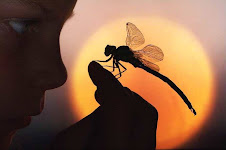1.-What is the function of a gizzard of a bird?
2.-An organ that produces milk to feed the young is called a
3.-Wich muscle helps mammals move air into and out or the lungs?
4.- An organism´s reaction to a signal is called
5.-A process that leads to change in behavior based on practice is called
6.- Learning that a particular stimulus or response leads to a good or a bad outcome is called
7.- A chemical released by one animal that affects the behavior of another animal of the same species is called a(n)
8.-A group of similar cells that perform a similar function is called a(n)
9.-Muscles that help the skeleton move are
10.- A colored substance that helps keep the skin from burning is
11.- What are the functions of the skin?
12.-The building blocks of proteins are
13.-Which of the following groups of nutrients is a major source of energy for the body?
14.- Bile is produce by the
15.- The process in which glucose and oxygen react in cells to release energy is called
16.- The trachea divides into two tubes called
17.-The filtration of wastes that take place inside the kidneys in the
18.- Some bacteria produce poisons called
19.-Antibodies are produced by
20.- What is the correct sequence of organs through which air travels when it is breath into the body is:
21.- What is a Lift?
22.- The functions of contour feathers is
23.-Spongy bone is filled with:
24.-Strands of hair that grow within the dermis in structures called:
25.- Most materials are absorbed into the bloodstream:
26.- What contains White blood cells and Red blood cells?
27.-Elevated blood pressure is called:
28.- Is a chemical in tobacco smoke that makes the heart beat faster:
29.- Clusters of air sacs in the lungs are:
30.-Urine is stored in the:
31.- The two lower chambers of the heart are called:
32.- Vitamins are:
33.- What determines which of two cereals supplies more iron?
34.- Moves food through the digestive system:
35.- What are Minerals?
36.- The bones in movable join are held together by strong connective tissue called:
37.- The most important function of the cardiovascular system is to
38.- Cholesterol is a waxy substance associated with
39.- Which type of body tissue covers the surfaces of the body?
40.-Which of the following represents the smallest level of organization in the body?
41.- The energy-containing nutrients that are composed of carbon, oxygen and hydrogen.
42.- Transports materials to and from cells
43.- Breaks down food and absorbs nutrients
44.-Supports and protects the body
45.- Detects information from the environment and controls body functions
46.-Takes in oxygen and eliminates carbon dioxide
47.- Removes wastes
48.- Controls many body processes by means of chemicals
49.-Enables movements of the body and internal organs
50.-Occcurs when blood flows to part of the heart muscle that is clocked
51.- What are the characteristics of most fishes?
52.- They live in the water and have fins, obtain oxygen trough gills and have scales
53.- What are the major groups of fishes and how are do they different?
54.-What are the main characteristics of amphibians?
55.- They live in water, most spend their adulthood on land returning to reproduce.
56.-What are some adaptations of an adult amphibian for be able to live on land?
Study the next key terms:
Gizzard, Mammary gland, Diaphragm, Response, Learning, Instinct, Learning, Response, Behavior, Conditioning, Insight learning, Pheromone, Cell, Tissue, Organ, Organ system, cardiac muscles, Dermis, Epidermis, Melanin, Epidermis, Follicle, Smooth muscles, Skeletal muscles, Involuntary muscles, Pores, Cartilage ligament.
Suscribirse a:
Enviar comentarios (Atom)

No hay comentarios:
Publicar un comentario